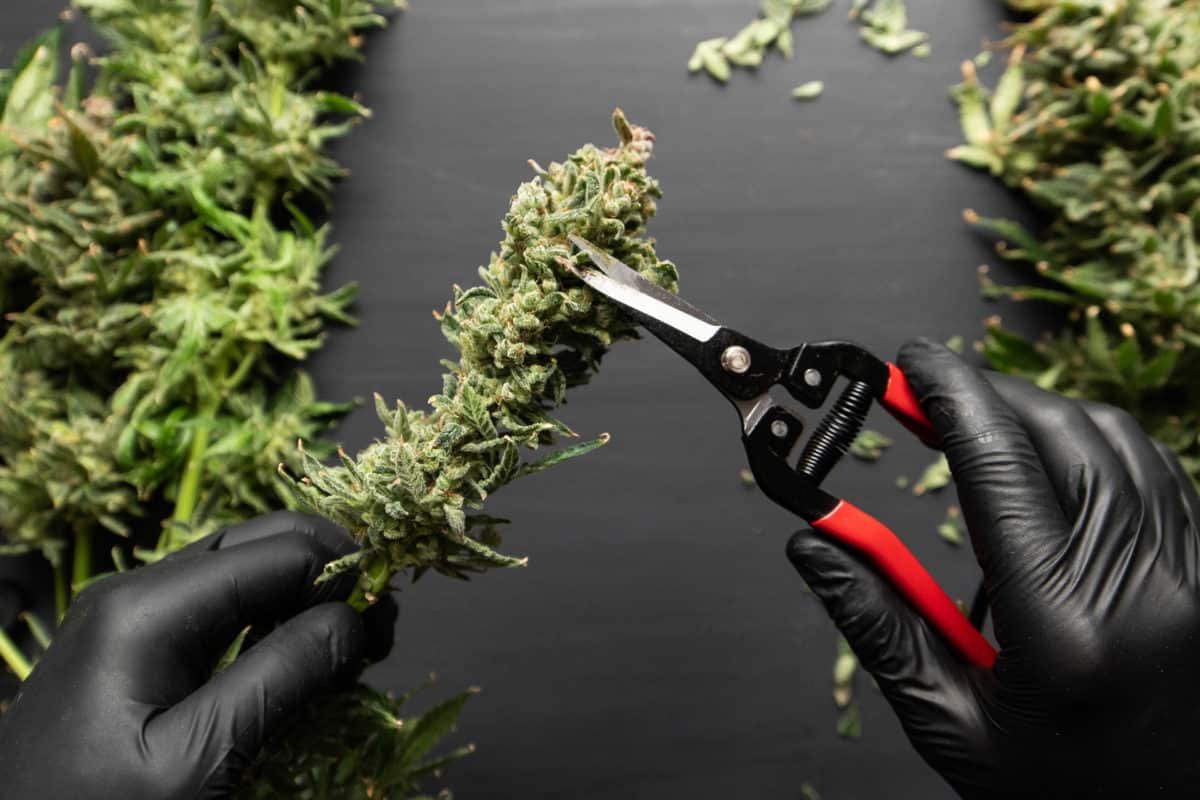When Should You Harvest Weed? (Indoors & Outdoors)
Introduction
Growing your own cannabis at home has become increasingly popular, especially in states where medical marijuana is legal. This practice not only reduces your weed costs but also provides you with access to your favorite strains year-round. One of the most crucial stages in cannabis cultivation is harvesting. But when is the right time to harvest your cannabis plants?
This blog post will guide you through the art of harvesting, both for indoor and outdoor cultivation, and help you understand when your weed is at its peak.
When to Harvest Weed
Harvesting cannabis is a pivotal moment in the cultivation process. The timing is critical, and it's important to strike the right balance. Waiting too long can result in overripe buds, while harvesting too early can lead to underdeveloped potency. The goal is to harvest when the trichome and resin production is at its peak, and it typically takes 8-12 weeks for cannabis plants to mature, with indoor plants ready a bit sooner, typically within 7-9 weeks.
However, the exact timing of the harvest depends on various factors, including the strain, growing method, and environmental conditions.
Let's explore how to determine the right time for harvesting using the Pistil and Trichome Methods.
How Can Medical Marijuana help those with Autism Spectrum Disorder?
The Pistil Method
The Pistil Method is a straightforward way to gauge your plant's maturity. Pistils, the female sex organs of the cannabis plant, appear as thick white hairs on the buds. As your plant matures, these pistils will change from white to brown or orange and begin to curl against the buds. When approximately 60-75% of the pistils have transitioned, your cannabis plants are ready to harvest. Keep in mind that waiting too long from this point can result in a decrease in THC potency.
While the Pistil Method is simple, it can be less precise, leading to the risk of harvesting too early or overripening your cannabis plants. For this reason, many growers prefer the Trichome Method.
The Trichome Method
The Trichome Method is a more accurate way to determine the readiness of your cannabis plants. Trichomes are small, resinous glands found on the plant, resembling tiny, clear mushrooms. As your plant ripens, these trichomes will change from clear to milky or cloudy white, with some turning amber or brown. It's important not to wait for all trichomes to become brown, as this indicates overripeness.
Using the Trichome Method allows for a more precise determination of the ideal harvest time. This method is favored by experienced growers who aim for the highest quality and potency.
Related: Cannabis Extraction: How Marijuana Is Produced
How to Identify Overripe Buds
Waiting too long to harvest can lead to overripe buds, which can negatively impact the quality, potency, and size of your harvest. Overripe buds may also have an unpleasant taste when smoked. Signs of overripe buds include dry and withering leaves, a pungent and skunky odor, and mostly brown or amber trichomes. If you find that you've overripened your buds, it's best to harvest immediately to salvage what you can.
How to Identify Under Ripe Buds
Harvesting too early can also reduce the potency and yield of your crop. Look for mostly white and rigid pistils and small, clear trichomes to identify underripe buds. Waiting for trichomes to become milky and pistils to darken will ensure that your plants reach their full potential.
When to Harvest Cannabis Grown Indoors
Indoor cannabis cultivation provides the flexibility of year-round harvesting. Most indoor cannabis plants require 6-9 weeks of flowering before they are ready to be harvested. However, the exact timing can vary based on factors such as the strain and the specific cultivation method. For micro-growers, the harvest may occur even earlier. From seed to harvest, indoor cannabis plants typically need anywhere from 3 to 8 months.
Related: How To Germinate Marijuana Seeds?
When to Harvest Cannabis Grown Outdoors
Outdoor cannabis is an annual plant that thrives during the warm months of the growing season. Typically, outdoor marijuana plants are ready for harvest around September or October, with variations depending on geographical location. In regions with milder climates, such as California, the growing season can extend into November. When growing cannabis outdoors, understanding your local climate and the length of the growing season is crucial for determining the optimal harvest time.
Harvesting Autoflowers
Autoflowering cannabis plants have a unique flowering schedule based on a specific timeframe, not light cycles. Planting autoflowers in the early spring can lead to a harvest around June or July. You can still use the Pistil or Trichome Method to confirm the readiness of your autoflowers. Planting multiple batches of autoflowers can provide you with multiple harvests in one season.
You May Also Read: What Does Marijuana Smell Like?
Harvesting With Light Deprivation
By employing light deprivation techniques, cultivators can control the photoperiod of normal cannabis plants to encourage earlier flowering. This practice involves using lightproof tarps or turning off lights in indoor setups to shorten photoperiods. Plants subjected to light deprivation will have a shorter life cycle, similar to autoflowers, leading to multiple harvests per season.
Final Thoughts
Determining the ideal time to harvest your cannabis plants is crucial for achieving the best possible results. Factors such as strain, growing method, and environmental conditions all play a role in this decision. Whether you choose the Pistil or Trichome Method, both offer valuable insights into the readiness of your plants. By mastering the art of harvesting, you can ensure a successful cannabis cultivation experience and enjoy the rewards of your homegrown weed.




